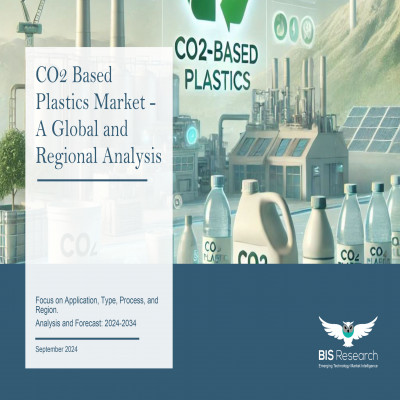Introduction to to Europe CO2-Based Plastics Market
The Europe CO2-based plastics market is projected to reach $6,187.5 million by 2034 from $248.5 million in 2024, growing at a CAGR of 37.92% during the forecast period 2024-2034. Strong regulations aimed at reducing carbon emissions and a growing dedication to sustainable material sourcing have had a major impact on the dynamics of the European market. Production processes are changing, especially in the plastics industry, as a result of strict environmental regulations and quick developments in carbon capture and utilisation technologies. These initiatives are further strengthened by industry-wide partnerships, which establish a framework that encourages innovation while tackling environmental issues. These technical developments have made it possible for a move towards more environmentally friendly production techniques as European businesses constantly strive to meet ever-tougher emission requirements. This development is especially apparent in the market for CO2-based plastics, where ongoing advancement is driven by growing consumer demand for environmentally beneficial products. Here, market incentives and regulatory pressures combine to encourage investments in sustainable practices that improve operational efficiency while also lessening their environmental impact. As a result, Europe is taking the lead in incorporating cutting-edge, low-emission technologies into its production procedures. The region's dedication to creative, ethical production practices is being highlighted by the way that policy, technology, and cooperative industry efforts are interacting to create new sustainability standards. This tendency places the market at the vanguard of international attempts to achieve both economic growth and environmental stewardship, underscoring Europe's larger push towards a circular economy.
Market Introduction
As Europe moves towards a low-carbon, circular economy, the market for polymers based on CO? is becoming increasingly important. Businesses are aggressively looking for sustainable substitutes for traditional plastics derived from fossil fuels as environmental concerns grow and the European Union imposes stringent climate rules. By turning greenhouse gases into useful materials, CO?-based plastics—which are made from collected carbon emissions—offer a viable way to alleviate plastic pollution and promote carbon reduction objectives.
CO2-based polymers are being used more and more in important industries like consumer products, automotive, and packaging because of their compatibility with current industrial infrastructure and smaller environmental impact. Carbon capture and utilisation (CCU) technology is improving production efficiency and scalability, increasing the commercial viability of these novel materials. Furthermore, the market is still expanding because to robust legislative assistance, such as the European Green Deal and other funding programs for green technologies.
Governments, academic institutions, and industry participants are working together to accelerate innovation and broaden the spectrum of applications for CO2-based plastics. The market is anticipated to grow stronger with continued investment and legislative assistance, notwithstanding present obstacles including high production costs and little customer awareness. Plastics based on CO? are set to be a key component of sustainable materials in the future, as Europe spearheads the worldwide transition to climate-resilient solutions.
Market Segmentation:
Segmentation 1: by Application
• Packaging
o Films
o Bottles
o Containers
o Trays
• Automotive Components
o Interior Components
o Structural Parts
• Construction Materials
o Pipes
o Panels
o Insulation
• Electronics Components
o Casings
o Connectors
o Circuit Boards
• Textile Processing
o Fibers
o Non-Woven Fabrics
• Others
Segmentation 2: by Type
• Polycarbonates
• Polyurethanes
• Polypropylene Carbonate (PPC)
• Polyethylene Carbonate (PEC)
• Polyethylene Terephthalate (PET)
• Others
Segmentation 3: by Production Process
• Electrochemistry
• Microbial Synthesis
• Thermocatalysis
Segmentation 4: by Region
• Europe: Germany, U.K., France, Spain, Italy, and Rest-of-Europe
Market trends, drivers and challenges of Europe CO2-Based Plastics Market
The market for CO2-based polymers in Europe is expanding significantly due to a number of important factors. Industries are looking for sustainable substitutes for conventional plastics as a result of strict EU laws designed to lower carbon emissions. Technological developments in carbon capture and utilisation have made it possible to convert CO2 into useful polymers, which is in line with Europe's goals for a circular economy. Additionally, businesses are investing in CO2-based polymers because to the growing customer demand for eco-friendly products, especially in industries like packaging and automotive.
However, the market faces numerous hurdles. Widespread adoption is hampered by the high production costs of CO2-based plastics, which are caused by the infancy of carbon capture technology and the requirement for specialised equipment. Production scalability is further limited by the scarcity of captured CO2 and the infrastructure needed to use it. Further impediments to industry expansion include competition from less expensive, traditional polymers and the requirement for large R&D expenditures.

